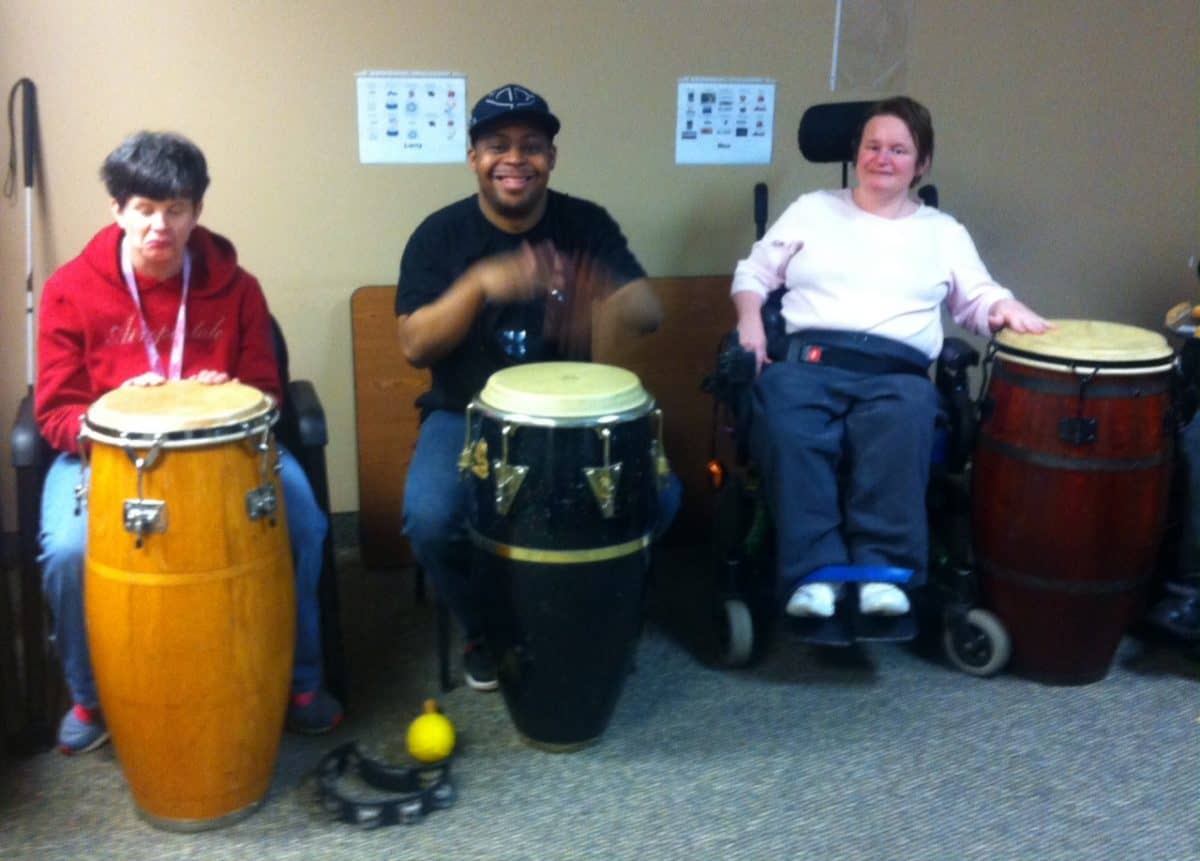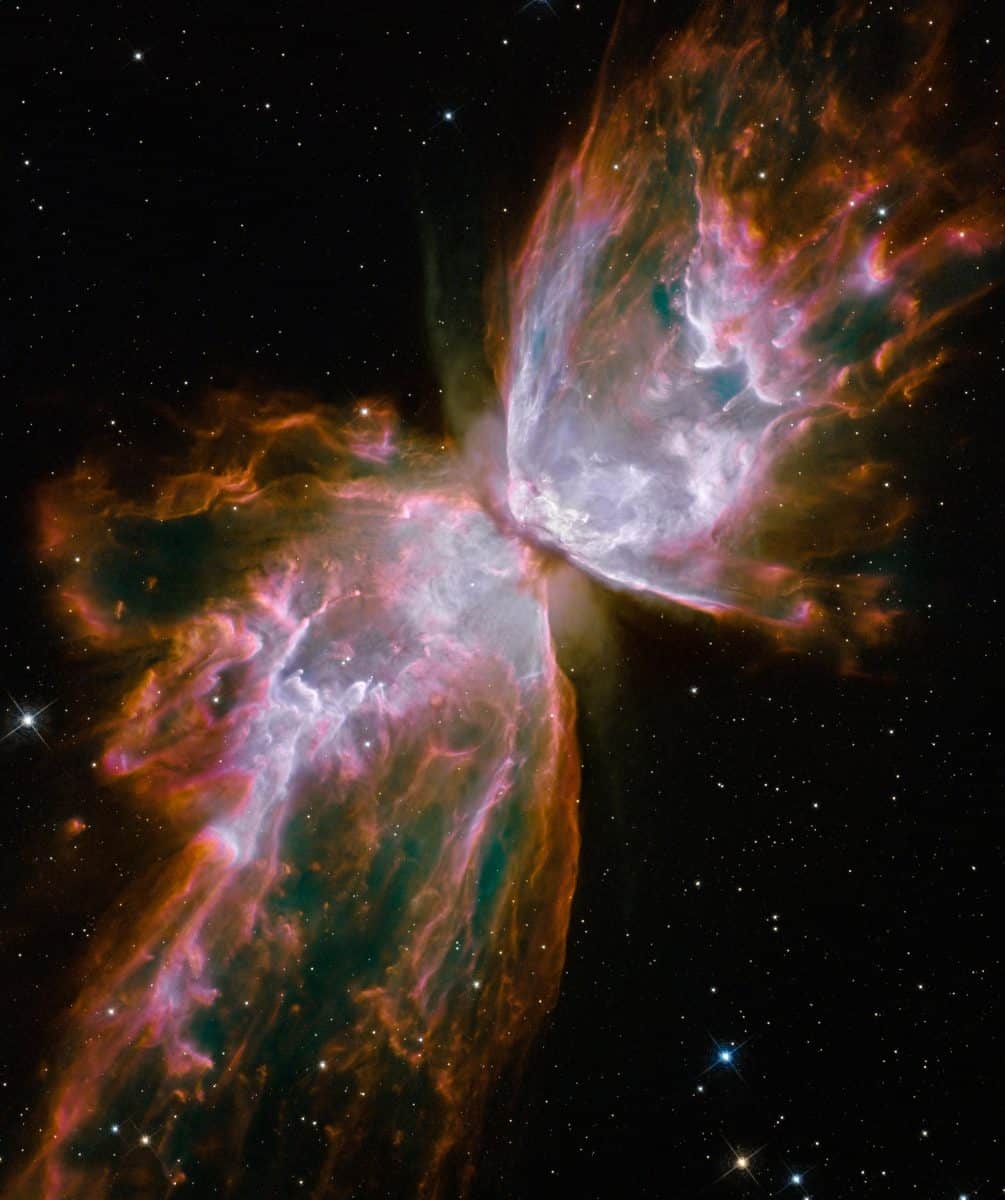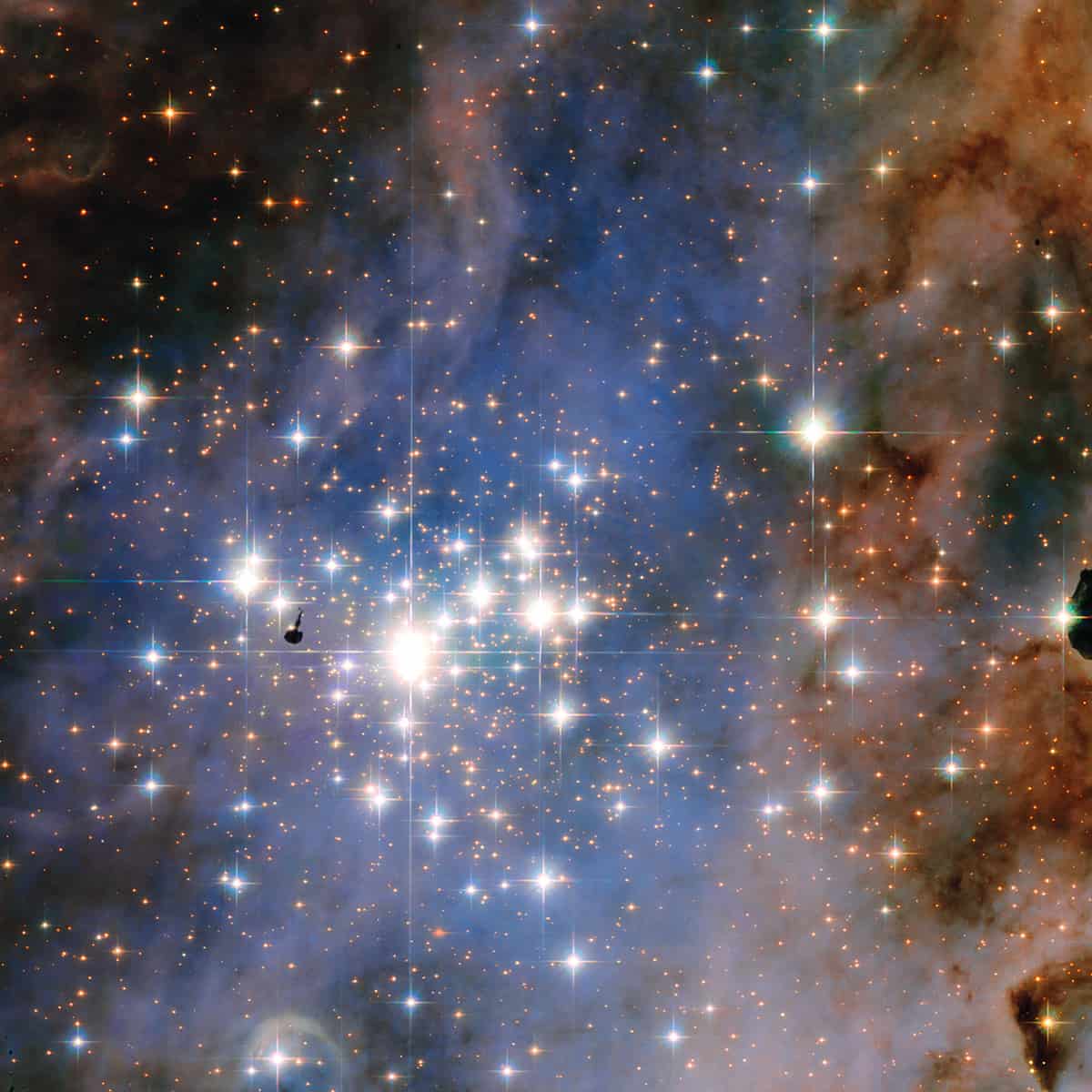Blog
Earle Lavon “Von” Freeman Sr. (October 3, 1923 – August 11, 2012) was an American hard bop jazz tenor saxophonist.
Born in Chicago, Illinois, Freeman as a young child was exposed to jazz. His father, George, a city policeman, was a close friend of Louis Armstrongwith Armstrong living at the Freeman house when he first arrived in Chicago.
Freeman’s father taught him to play piano and bought him his first saxophone when he was seven. His musical education was furthered at DuSable High School, where his band director was Walter Dyett. Freeman began his professional career at the age of 16 in Horace Henderson‘s Orchestra.
Freeman enlisted into the Navy during World War II and was trained at Camp Robert Smalls in Chicago. “All the great musicians ended up at Great Lakes”, he recalled. “It was an incubator for the best and the brightest lights in the jazz world at that time, and the musical jam sessions were simply phenomenal.” After training, he was sent to Hawaii as part of the Hellcats stationed at Barbers Point Naval Air Station in a band that starred Harry “Pee Wee” Jackson, the trumpeter from Cleveland whose nickname was Gabriel. The Hellcats were frequent winners of the islands’ competitive Battle of the Bands competitions and included musicians who had formerly played in bands fronted by Duke Ellington, Fletcher Henderson, Ella Fitzgerald, Lucky Millinder, Les Hite, Count Basie, Fats Waller, and Tiny Bradshaw.
more...
NGC 6302
Butterfly Emerges from Stellar Demise in Planetary Nebula NGC 6302
This celestial object looks like a delicate butterfly. But it is far from serene.
What resemble dainty butterfly wings are actually roiling cauldrons of gas heated to more than 36,000 degrees Fahrenheit. The gas is tearing across space at more than 600,000 miles an hour — fast enough to travel from Earth to the moon in 24 minutes!
A dying star that was once about five times the mass of the Sun is at the center of this fury. It has ejected its envelope of gases and is now unleashing a stream of ultraviolet radiation that is making the cast-off material glow. This object is an example of a planetary nebula, so-named because many of them have a round appearance resembling that of a planet when viewed through a small telescope.
The Wide Field Camera 3 (WFC3), a new camera aboard NASA’s Hubble Space Telescope, snapped this image of the planetary nebula, catalogued as NGC 6302, but more popularly called the Bug Nebula or the Butterfly Nebula. WFC3 was installed by NASA astronauts in May 2009, during the servicing mission to upgrade and repair the 19-year-old Hubble telescope.
NGC 6302 lies within our Milky Way galaxy, roughly 3,800 light-years away in the constellation Scorpius. The glowing gas is the star’s outer layers, expelled over about 2,200 years. The “butterfly” stretches for more than two light-years, which is about half the distance from the Sun to the nearest star, Alpha Centauri.
The central star itself cannot be seen, because it is hidden within a doughnut-shaped ring of dust, which appears as a dark band pinching the nebula in the center. The thick dust belt constricts the star’s outflow, creating the classic “bipolar” or hourglass shape displayed by some planetary nebulae.
The star’s surface temperature is estimated to be about 400,000 degrees Fahrenheit, making it one of the hottest known stars in our galaxy. Spectroscopic observations made with ground-based telescopes show that the gas is roughly 36,000 degrees Fahrenheit, which is unusually hot compared to a typical planetary nebulae.
The WFC3 image reveals a complex history of ejections from the star. The star first evolved into a huge red-giant star, with a diameter of about 1,000 times that of our Sun. It then lost its extended outer layers. Some of this gas was cast off from its equator at a relatively slow speed, perhaps as low as 20,000 miles an hour, creating the doughnut-shaped ring. Other gas was ejected perpendicular to the ring at higher speeds, producing the elongated “wings” of the butterfly-shaped structure. Later, as the central star heated up, a much faster stellar wind, a stream of charged particles travelling at more than 2 million miles an hour, plowed through the existing wing-shaped structure, further modifying its shape.
The image also shows numerous finger-like projections pointing back to the star, which may mark denser blobs in the outflow that have resisted the pressure from the stellar wind.
The nebula’s outer edges are largely due to light emitted by nitrogen, which marks the coolest gas visible in the picture. WFC3 is equipped with a wide variety of filters that isolate light emitted by various chemical elements, allowing astronomers to infer properties of the nebular gas, such as its temperature, density, and composition.
The white-colored regions are areas where light is emitted by sulfur. These are regions where fast-moving gas overtakes and collides with slow-moving gas that left the star at an earlier time, producing shock waves in the gas (the bright white edges on the sides facing the central star). The white blob with the crisp edge at upper right is an example of one of those shock waves.
more...Gordon Matthew Thomas Sumner CBE (born 2 October 1951), known as Sting, is an English singer, songwriter, and actor. He was the principal songwriter, lead singer, and bassist for the new wave rock band the Police from 1977 to 1985, and launched a solo career in 1986.
He has included elements of rock, jazz, reggae, classical, new-age and worldbeat in his music. As a solo musician and a member of the Police, he has received 16 Grammy Awards (his first in the category of best rock instrumental in 1980, for “Reggatta de Blanc”), three Brit Awards, including Best British Male in 1994 and Outstanding Contribution in 2002, a Golden Globe, an Emmy and four nominations for the Academy Award for Best Original Song. In 2002, he received the Ivor Novello Award for Lifetime Achievement from the British Academy of Songwriters, Composers and Authors and was also inducted into the Songwriters Hall of Fame. He was inducted into the Rock and Roll Hall of Fame as a member of the Police in 2003. In 2000, he received a star on the Hollywood Walk of Fame for recording. In 2003, Sting received a CBE from Elizabeth II at Buckingham Palace for services to music. He was made a Kennedy Center Honoree at the White House in 2014, and was awarded the Polar Music Prize in 2017.
more...Howard Roberts (October 2, 1929 – June 28, 1992) was an American jazz guitarist, educator, and session musician.
Roberts was born in Phoenix, Arizona, and began playing guitar at the age of 8. By the time he was 15 he was playing professionally locally.
In 1950, he moved to Los Angeles, California. With the assistance of Jack Marshall, he began working with musicians, arrangers and songwriters including Neal Hefti, Henry Mancini, Bobby Troup, Chico Hamilton, George Van Eps, and Barney Kessel. Around 1956, Bobby Troup signed him to Verve Records as a solo artist. At that time he decided to concentrate on recording, both as a solo artist and a Wrecking Crew session musician, a direction he would continue until the early 1970s.
Roberts played rhythm and lead guitar, bass guitar, and mandolin. He was known for his heavy use of the Gibson L-5 guitar in the studio and for television and movie projects, including lead guitar on the theme from The Twilight Zone as well as acoustic and electric guitar on I Love Lucy, The Munsters, Bonanza, The Brady Bunch, Gilligan’s Island, Green Acres, Get Smart, Batman, Beverly Hillbillies, Andy Griffith, Peter Gunn, Lost in Space, Dragnet, Wild Wild West, Mission: Impossible, The Odd Couple, Dick Van Dyke, I Dream of Jeannie, and the theme for the film Bullitt.
https://www.youtube.com/watch?v=tIOiYy-GPFA
more...Dave Holland (born 1 October 1946) is an English jazz double bassist, composer and bandleader who has been performing and recording for five decades. He has lived in the United States for over 40 years.
His work ranges from pieces for solo performance to big band. Holland runs his own independent record label, Dare2, which he launched in 2005. He has explained his musical philosophy by quoting fellow jazz artist Sam Rivers: “Sam said, ‘Don’t leave anything out – play all of it.'”
Holland has played with some of the greatest names in jazz, and has participated in several classic recording sessions.
more...Albert Gene Drewery, known as Albert Collins and the Ice Man (October 1, 1932 – November 24, 1993), was an American electric blues guitarist and singer with a distinctive guitar style. He was noted for his powerful playing and his use of altered tunings and a capo. His long association with the Fender Telecaster led to the title “The Master of the Telecaster”.
Collins was born in Leona, Texas, on October 1, 1932. He was introduced to the guitar at an early age by his cousin Lightnin’ Hopkins, also a Leona resident, who played at family gatherings.
more...The Awá, or Guajá, are an indigenous people of Brazil living in the eastern Amazon rainforest. There are approximately 350 members, and 100 of them have no contact with the outside world. They are considered highly endangered because of conflicts with logging interests in their territory.
They speak Guajá, a Tupi–Guaraní language. Originally living in settlements, they adopted a nomadic lifestyle around 1800 to escape incursions by Europeans. During the 19th century, they came under increasing attack by settlers in the region, who cleared most of the forests from their land.
more...Resembling an opulent diamond tapestry, this image from NASA’s Hubble Space Telescope shows a glittering star cluster that contains a collection of some of the brightest stars seen in our Milky Way galaxy. Called Trumpler 14, it is located 8,000 light-years away in the Carina Nebula, a huge star-formation region. Because the cluster is only 500,000 years old, it has one of the highest concentrations of massive, luminous stars in the entire Milky Way. (The small, dark knot left of center is a nodule of gas laced with dust, and seen in silhouette.)
Diamonds are forever, but these blue-white stars are not. They are burning their hydrogen fuel so ferociously they will explode as supernovae in just a few million years. The combination of outflowing stellar “winds” and, ultimately, supernova blast waves will carve out cavities in nearby clouds of gas and dust. These fireworks will kick-start the beginning of a new generation of stars in an ongoing cycle of star birth and death.
This composite image of Trumpler 14 was made with data taken in 2005-2006 with Hubble’s Advanced Camera for Surveys. Blue, visible, and infrared broadband filters combine with filters that isolate hydrogen and nitrogen emission from the glowing gas surrounding the open cluster.
more...Oscar Pettiford (September 30, 1922 – September 8, 1960) was an American jazz double bassist, cellist and composer. He was one of the earliest musicians to work in the bebop idiom.
Pettiford was born at Okmulgee, Oklahoma. His mother was Choctaw, and his father was half Cherokee and half African American.
He grew up playing in the family band in which he sang and danced before switching to piano at the age of 12, then to double bass when he was 14. He is quoted as saying he did not like the way people were playing the bass so he developed his own way of playing it. Despite being admired by the likes of Milt Hinton at the age of 14, he gave up in 1941 as he did not believe he could make a living. Five months later, he once again met Hinton, who persuaded him to return to music.
In 1942 he joined the Charlie Barnet band and in 1943 gained wider public attention after recording with Coleman Hawkins on his “The Man I Love“. Pettiford also recorded with Earl Hines and Ben Webster around this time. After he moved to New York, he was one of the musicians (together with Dizzy Gillespie, Thelonious Monk, Kenny Clarke) who in the early 1940s jammed at Minton’s Playhouse, where the music style developed that later was called bebop. He and Dizzy Gillespie led a bop group in 1943. In 1945 Pettiford went with Hawkins to California, where he appeared in The Crimson Canary, a mystery movie known for its jazz soundtrack, which also featured Josh White. He then worked with Duke Ellington from 1945 to 1948 and for Woody Herman in 1949 before working mainly as a leader in the 1950s.
https://www.youtube.com/watch?v=yyn0DklEN20
more...
Bernard “Buddy” Rich (September 30, 1917 – April 2, 1987) was an American jazz drummer and bandleader. He is widely considered one of the most influential drummers of all time and was known for his virtuoso technique, power and speed. Rich performed with many bandleaders, most notably Tommy Dorsey, Harry James and Count Basie, and later led his own big band.
Rich was born in Sheepshead Bay, Brooklyn to Jewish-American parents Bess (née Skolnik) and Robert Rich, both vaudevillians. His talent for rhythm was first noted by his father, who saw that Rich could keep a steady beat with spoons at the age of one. He began playing drums in vaudeville when he was 8 years old, billed as “Baby Traps the Drum Wonder”. At the peak of his childhood career, he was the second-highest paid child entertainer in the world after Jackie Coogan.
In addition to Tommy Dorsey (1939–42, 1945, 1954–55), Rich also played with Benny Carter (1942), Harry James (1953–56–62, 1964, 1965), Les Brown, Charlie Ventura, and Jazz at the Philharmonic. He led his own band and performed with all-star groups, including Charlie Parker and his Orchestra, featuring Dizzy Gillespie and Thelonious Monk (on the 1950 album Bird and Diz). In the early ’50s, Rich again played with Dorsey and began to perform with trumpeter Harry James, an association which lasted until 1966. That year, Rich left James to develop a new big band. From 1966 until his death, he led successful big bands in an era when the popularity of big bands had waned from their 1930s and 1940s peak. In this later period, Rich continued to play clubs, but stated in multiple interviews that the majority of his big bands’ performances were at high schools, colleges, and universities, with club performances to a lesser degree. Rich also served as the session drummer for many recordings, where his playing was often more understated than in his big-band performances. Especially notable were Rich’s sessions for Ella Fitzgerald and Louis Armstrong, on which he worked with pianist Oscar Petersonand his famous trio featuring bassist Ray Brown and guitarist Herb Ellis.
more...https://www.youtube.com/watch?v=_1zzDvtu9lY
more...More Posts
- Kitty Kuluvar Memorial Celebration with the Maroons 4-18-22
- Cosmos VV689
- Danny Gottlieb
- Leo Parker
- Clarence Gatemouth Brown
- “Little Brother” Montgomery
- STAND WITH UKRAINE HARDKISS
- Daily Roots Culture
- Cosmos IC 443
- Jan Hammer
- Buster Williams
- Johnny St Cyr
- STOP THE WAR IN UKRAINE Maksim Popichuk
- Daily Roots Max Romeo
- Cosmos Orion Nebula
- Herbie Mann
- Bennie Green
- Alton Punell
- SAVE UKRAINE Olga Avigail
- Daily Roots The Revolutionaries



